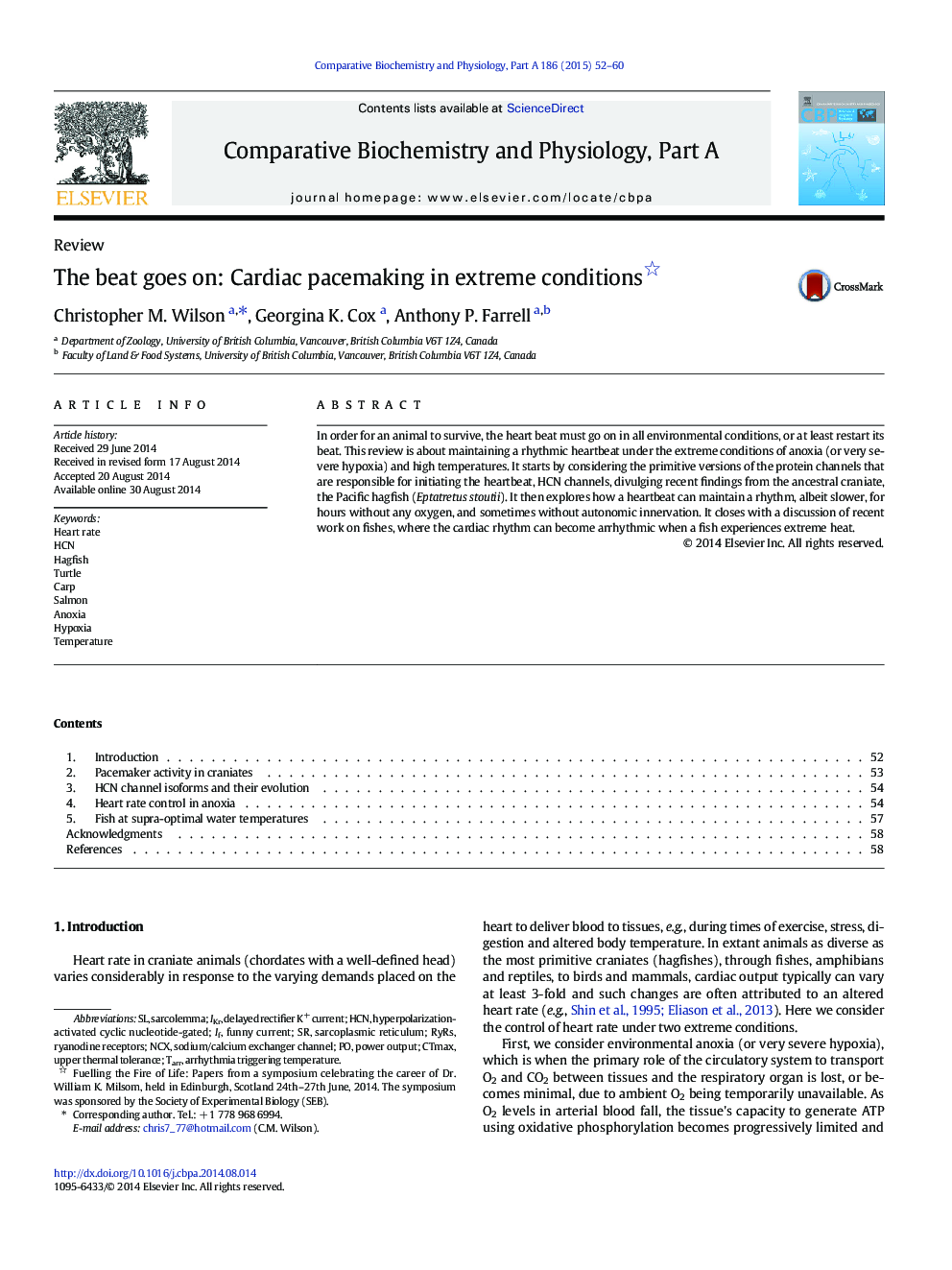| Article ID | Journal | Published Year | Pages | File Type |
|---|---|---|---|---|
| 1972097 | Comparative Biochemistry and Physiology Part A: Molecular & Integrative Physiology | 2015 | 9 Pages |
In order for an animal to survive, the heart beat must go on in all environmental conditions, or at least restart its beat. This review is about maintaining a rhythmic heartbeat under the extreme conditions of anoxia (or very severe hypoxia) and high temperatures. It starts by considering the primitive versions of the protein channels that are responsible for initiating the heartbeat, HCN channels, divulging recent findings from the ancestral craniate, the Pacific hagfish (Eptatretus stoutii). It then explores how a heartbeat can maintain a rhythm, albeit slower, for hours without any oxygen, and sometimes without autonomic innervation. It closes with a discussion of recent work on fishes, where the cardiac rhythm can become arrhythmic when a fish experiences extreme heat.
